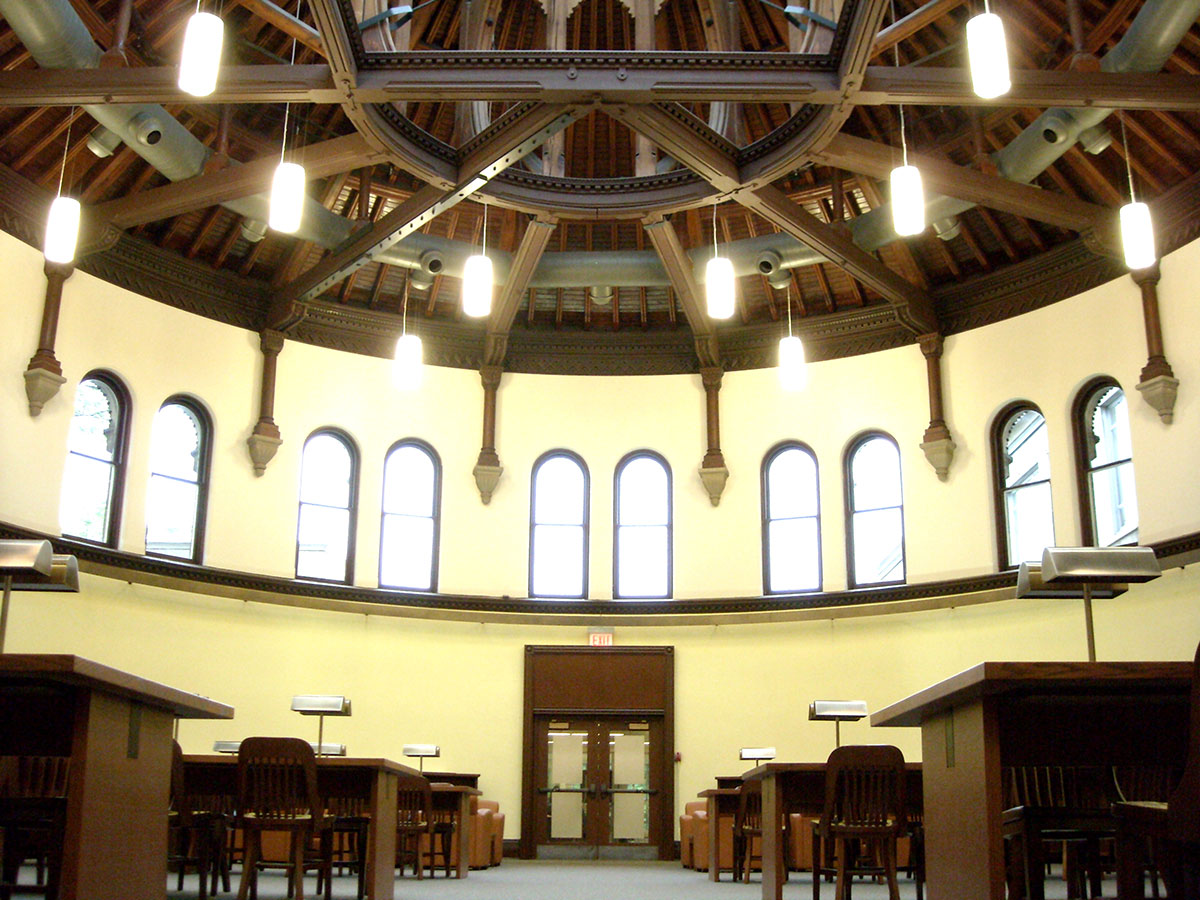
The hand-carved ceiling trusses and striking glass skylight of an 1892 neo-Gothic rotunda in the University of Toronto’s Gerstein Science Information Centre have come out of hiding.
The grandeur of the Gerstein Reading Room was obscured nearly a century ago by a drop ceiling and shelves that in recent years contained little more than outmoded reference books. A leaky skylight and the need to add more and better study space for students led to a renovation of the room, which was completed in 2008.
Although access to the area above the drop ceiling has always been open to library administrators, there had been little motivation to look beyond the dirt and water damage in recent years. At the urging of Diamond and Schmitt Architects, who oversaw the project, the renovation committee climbed the tower staircase for a closer look in 2006. “We saw something worth exploring,” says Sandra Langlands, director of the centre.
The committee opted to make the removal of the drop ceiling and the restoration of the underlying woodwork a part of the room’s overhaul, funded by the Frank Gerstein Charitable Foundation and the Bertrand Gerstein Family Foundation. The end result netted the project an honourable mention at this year’s Heritage Toronto Awards.
But why were such intricate architectural details covered up in the first place? Some early photographs provide a clue: the original ceiling lacked the massive metal braces that Langlands estimates were added around the same time as the cover-up. “We think that the braces were added for structural reasons, but were considered unattractive,” says Langlands. “But styles change. Now we like to see these things.”
We do indeed.